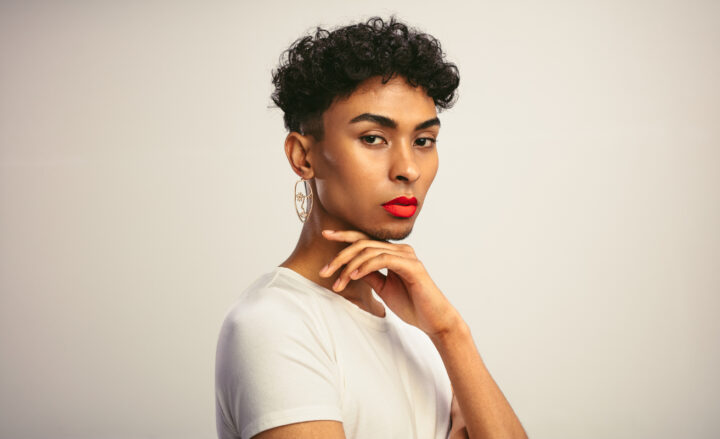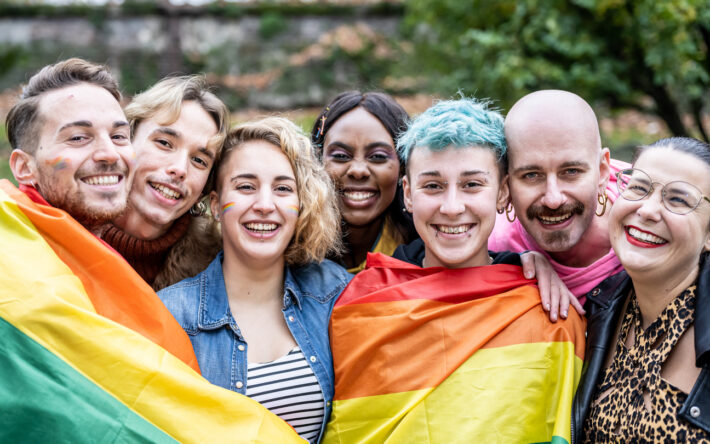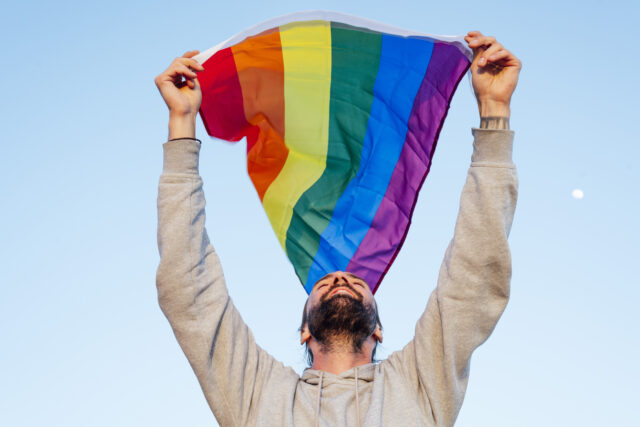
It’s 2025. We’ve seen major legal wins, huge cultural shifts, and growing visibility, but that doesn’t mean LGBTQ+ people get to stop explaining themselves. The conversations might look different than they did a decade ago, but they’re still happening at work, with family, in relationships, or even at the doctor’s. Here are just some of the things queer people still find themselves having to clarify, defend, or break down (again).
1. Bisexuality isn’t “just a phase” or “half straight.”
Some people still think being bi means someone’s undecided, greedy, or doing it for attention. And if someone ends up in a straight-presenting relationship? Suddenly, their whole identity is questioned. Being bi doesn’t disappear depending on your partner. It’s not a temporary stop on the way to something else; it’s a valid orientation. But far too often, bi people are still expected to “pick a side” or justify their place in the community.
2. Pronouns aren’t optional, decorative, or up for debate.
Despite the wider use of pronouns in email signatures and social media bios, some people still act like it’s just a trend, or something that’s only relevant in activist circles. For many trans and non-binary people, pronouns are about basic respect and safety. They’re not a quirky preference. They’re an essential part of how someone moves through the world, and refusing to use them correctly says more about your attitude than it does about “free speech.”
3. Coming out isn’t a one-time event.
People still assume once someone comes out once, that’s it, they’re done. Unfortunately, for queer people, it often happens over and over again: to new friends, co-workers, healthcare providers, landlords, even taxi drivers. It’s a loop, not a milestone. And while some moments are empowering, others are risky or exhausting. The constant calculation of “Is it safe to be out here?” doesn’t stop just because society has “moved forward.”

4. Gender identity and sexual orientation aren’t the same thing.
You’d think we’d be past this by now, but plenty of people still confuse the two. Being trans doesn’t mean you’re gay, and being non-binary doesn’t automatically tell you anything about someone’s sexual orientation. LGBTQ+ identities are not interchangeable puzzle pieces. Understanding the difference takes a basic willingness to listen, but too many people still treat these conversations like a mental workout instead of human reality.
5. “They/them” as a singular pronoun isn’t new (or hard).
Some people still clutch their pearls over the idea of using “they” for a single person, as if it’s grammatical rocket science. In reality, we all do it naturally, when we say things like, “Someone left their phone,” or “I don’t know who they are.” It’s not about the grammar. It’s about the resistance to respecting people’s identities. The English language is flexible. The real issue is whether someone’s willing to adapt their mindset, not their sentence structure.
6. Being “out and proud” doesn’t cancel out homophobia.
Just because there are pride flags on high street shops or queer characters on Netflix doesn’t mean the fight is over. Visibility doesn’t automatically equal safety, or acceptance. Hate crimes still happen. Trans healthcare is still under attack. Queer kids are still bullied. Acting like we’ve “won” ignores the daily reality for a lot of people just trying to live openly without backlash.

7. Questioning your identity is normal, and not a sign of confusion.
People often treat identity changes like they invalidate the past. “But you said you were gay, now you’re dating someone of a different gender?” or “Didn’t you used to use different pronouns?” Exploration isn’t confusion; it’s part of growth. Identities can evolve over time as people learn more about themselves, and that doesn’t make earlier versions of themselves any less real or honest.
8. LGBTQ+ people don’t owe anyone a “trauma story.”
Sometimes people only extend empathy when they hear about pain. They expect coming-out stories filled with rejection, struggle, or violence, as if the only way to be valid is to have suffered enough. But queerness doesn’t need to be justified with trauma. Joy, stability, and pride are just as real. LGBTQ+ people aren’t obligated to perform their pain to earn respect or support.
9. Queerness isn’t just a “young person thing.”
There’s a weird assumption that LGBTQ+ identity peaks in your 20s and then disappears, or that older queer people are somehow less visible, less valid, or harder to understand. Of course, queer elders exist, and always have. Many paved the way for the freedoms younger people now experience. Others are still discovering or claiming their identity later in life. Visibility shouldn’t come with an age cap.
10. Being non-binary doesn’t mean being “in the middle.”
A lot of people picture gender like a line, with “man” at one end and “woman” at the other, so being non-binary must mean you sit in the middle. But for many, it doesn’t work like that. Non-binary identity isn’t always about being halfway between two things. It can be a rejection of the scale entirely. There’s no one way to be non-binary, and boxing it into a neat middle category misses the whole point.

11. A relationship doesn’t make someone “less queer.”
Queer people in straight-presenting relationships often get told, “You’re basically straight now,” or get side-eyed for still identifying as LGBTQ+. But orientation doesn’t disappear based on who you’re currently dating. Being queer is about who you are, not just who you’re with. No one should have to re-prove or re-justify their identity just because their partner “looks” a certain way to outsiders.
12. Visibility isn’t the same as understanding.
Just because someone’s seen a trans influencer or watched a show with a gay lead doesn’t mean they understand queer lives. Representation doesn’t equal relationship, and it’s not a shortcut to actual empathy. LGBTQ+ people still have to navigate ignorant comments, invasive questions, and lazy assumptions from people who think they’re informed simply because they’ve seen something on TV. There’s still a gap between watching and listening.
13. “Preferred pronouns” isn’t the right term.
Some people still say “preferred pronouns,” as if it’s a suggestion rather than a fact. However, pronouns aren’t a preference like a sandwich topping; they’re part of who someone is. This kind of language may seem minor, but it matters. Words shape the tone of how people are treated. It’s 2025. This one shouldn’t still need explaining, but it does.

14. Not all LGBTQ+ people feel “safe” just because they’re legal.
Legal rights are crucial, but they don’t guarantee safety in practice. LGBTQ+ people can still be rejected by families, treated unfairly at work, misgendered in healthcare, or harassed in public spaces, even with protections in place. Equality on paper doesn’t always show up in everyday life. Safety isn’t just about laws. It’s about whether someone can exist without constantly defending themselves.
15. Allyship is about action, not aesthetics.
Having a rainbow sticker, saying you’re “cool with it,” or posting on Pride month doesn’t automatically make someone a safe person. Real allyship shows up in conversations, choices, and the way people speak when queer people aren’t in the room. LGBTQ+ people still have to explain the difference between supportive and performative. Looking inclusive means nothing if you’re not backing that up with real, consistent respect.



